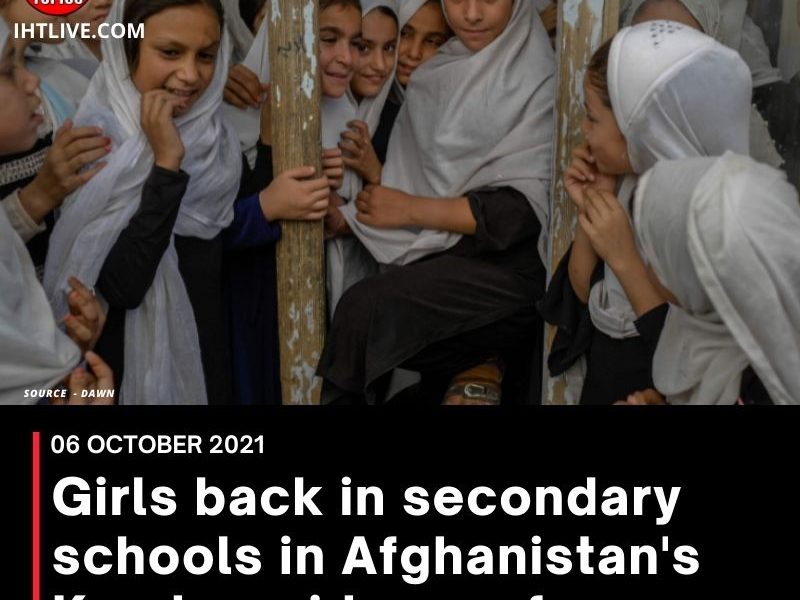Taliban spokesperson Suhail Shaheen said in a video shared on Twitter that secondary schools in Kunduz Province, Afghanistan are now open to girls. The video shows many girls wearing black dresses and white scarves, some wearing veils and waving Taliban flags.
“The girls will go to high school in Khan Abad, Kunduz province,” Shahin, who is based in Doha, wrote on Twitter, after he was appointed as the permanent representative of the new government of Afghanistan to the United Nations. In a video broadcast by the Afghan Radio and Television Station (RTA), a reporter can be heard saying that “schools are open to girls and there are no restrictions.”
Then a Taliban member said: “Girls and boys in the seventh to twelfth grades go to school in the area. So far, no one has a problem.” A Taliban spokesperson said in August that women will be allowed to work and study, and another official said that women should participate in government work.
The Taliban government stated that Afghan women will enjoy rights “within the scope of Islamic law” or Sharia law under its newly established rules. However, women in the country have been worried about the Taliban’s interpretation of Sharia law and the return of the repressive policies witnessed during the 1996-2001 rule. The Taliban also stated that women do not need to wear a complete burqa, but can only wear a headscarf (turban). When they were in power for the last time, the Taliban mandated that they wear a full burqa.
During the rule of the 1990s, girls’ schools were closed and basic medical facilities were deprived. Women face cruel punishments, and some have been publicly beaten, stoned or executed for violating regulations. With the opening of universities in September, teachers and students in Afghanistan’s largest cities, Kabul, Kandahar and Herat, told Reuters that female students were segregated in class, taught individually, or restricted to certain parts of the campus.
A photo also appeared, showing male and female students sitting in a class separated by curtains. A few days later, some Afghan girls returned to elementary schools with separate classes for men and women, but the older girls were facing anxious waiting, not knowing whether and when they would be able to resume their secondary school studies.
News Source : Zoom News

